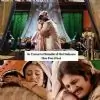Timujin jo aage chal ke Genghis khan se prasidd huye. Jisne apni shuruyat Mongolia se ki, aur apna rajya pure Central Asia per faila liya tha. Genghis Khan ko father of Mongolia kehte hai.
Fhir aage chalke issi vansh ne apna rajya, China, Russia, Korea, or pure Central Asia me fehela liya tha.
Genghis Khan was Akbar's Role Model. Akbar ne kai saari baatein inse bhi sikhi hai, jisme sabse pramukh hai, religious tolerance, yaneki sabko apna dharam manane ki aazaadi.
Iske baad Torco-Mongol culture shuru hua.
See the picture on the below link showing:
Asia in 1335, showing states central to the development of Turco-Mongol culture including the Golden Horde and the Chagatai Khanate.
http://upload.wikimedia.org/wikipedia/commons/b/b6/Asia_in_1335.svgThe Turco-Mongol (or Turko-Mongol) tradition was a cultural synthesis which arose during the early 1300s among the ruling elites of Mongol Empire successor states such as the Chagatai Khanate and Golden Horde. These elites adopted Turkic languages and local religions such as Islam and Buddhism, while retaining Mongol political and legal institutions. Many later Central Asian states drew heavily on this tradition, including the Timurid dynasty, the Khanate of Kazan, the Nogai Khanate, and the Crimean Khanate.
In 1320-1330, Uzbek was born. He is famous with his other name that is Timur or Tamerlane. He was a Turko-Mongol conqueror and the founder of the Timurid dynasty in Central Asia. By 1370, he gained control of the Western Chagatai Khanate. From that base, he led military campaigns acrossWest, South and Central Asia and emerged as the most powerful ruler in the Muslim world after defeating the Mamluks of Egypt and Syria, the emergingOttoman Empire and the declining Sultanate of Delhi. From these conquests he founded the Timurid Empire, although it fragmented shortly after his death. He is considered the last of the great nomadic conquerors of the Eurasian steppe, and his empire set the stage for the rise of the more structured and lasting gunpowder empires in the 1500s and 1600s. Timur envisioned the restoration of the Mongol Empire of Genghis Khan.[5] As a means of legitimating his conquests, Timur relied on Islamic symbols and language, referring to himself as the "Sword of Islam" and patronizing educational and religious institutions. He converted nearly all the Borjigin leaders to Islam during his lifetime.[6] His armies were inclusively multi-ethnic. Timur also decisively defeated the Christian Knights Hospitaller at Smyrna, styling himself a ghazi. By the end of his reign, Timur had gained complete control over all the remnants of the Chagatai Khanate, Ilkhanate, Golden Hordeand even attempted to restore the Yuan dynasty.
Timur's armies were feared throughout Asia, Africa, and Europe,sizable parts of which were laid waste by his campaigns. Scholars estimate that his military campaigns caused the deaths of 17 million people, amounting to about 5% of the world population.
He was the grandfather of the renowned Timurid sultan, astronomer and mathematician Ulugh Beg, who ruled Central Asia from 1411 to 1449, and the great-great-great-grandfather of Babur, founder of the Mughal Empire, which ruled parts of South Asia for around four centuries, from 1526 until 1857. Timur is also recognized as a great patron of art and architecture, as he interacted with Muslim intellectuals such as Ibn Khaldun and Hafiz-i Abru.
The Timurid empire at Timur's death in 1405.


























367